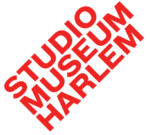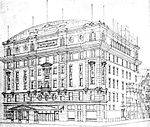Frequency Exhibition
2005 in art2006 in artAfrican-American artArt exhibitions in the United StatesEvents in New York City ... and 1 more
Harlem
The Frequency Exhibition was a contemporary exhibition at the Studio Museum in Harlem from November 9, 2005 - March 12, 2006. Curated by Thelma Golden and associate curator Christine Y. Kim, the exhibition featured the works of 35 emerging Black artists. Frequency, following the 2001 exhibition "Freestyle," is one of five "F" themed exhibitions alongside Flow, Fore, and Fictions. While curators Golden and Kim point out that Frequency was not "Freestyle II," the organization of artists under the umbrella of Black identity engages with "Post-Black" art similarly to the Freestyle exhibition.
Excerpt from the Wikipedia article Frequency Exhibition (License: CC BY-SA 3.0, Authors).Frequency Exhibition
West 125th Street, New York Manhattan
Geographical coordinates (GPS) Address Nearby Places Show on map
Geographical coordinates (GPS)
| Latitude | Longitude |
|---|---|
| N 40.808477777778 ° | E -73.947533333333 ° |
Address
West 125th Street 144
10027 New York, Manhattan
New York, United States
Open on Google Maps








